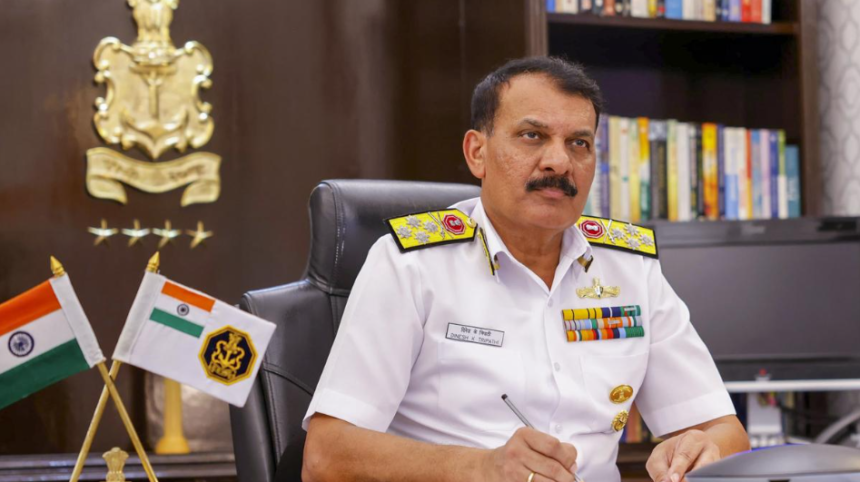India’s Navy Chief recently emphasized the nation’s advanced capabilities and proactive mechanisms for monitoring its oceanic territories. With vast coastlines and crucial shipping routes, India’s ability to maintain effective maritime surveillance is essential for national security, economic stability, and regional peace. The Navy Chief’s statement underscores India’s commitment to safeguarding its maritime boundaries through sophisticated technologies, collaborative partnerships, and extensive ocean-monitoring systems.
India’s Strategic Importance in the Indian Ocean Region
The Indian Ocean is a strategic waterway, providing passage to over 80% of the world’s maritime oil trade and facilitating global commerce. As the world’s fifth-largest economy, India’s national security is deeply interconnected with the safety of its maritime routes. India’s monitoring and surveillance capabilities are vital not only for the country’s own interests but also for regional stability in the Indian Ocean Region (IOR).
India has been strengthening its maritime infrastructure over the years, considering both the economic potential and the security challenges in these waters. With rising concerns around piracy, smuggling, illegal fishing, and increasing naval activity by foreign powers, India’s role as a regional maritime power has grown significantly. Effective monitoring systems help India ensure that it can protect its maritime interests while promoting stability across the Indian Ocean.
Advanced Ocean Surveillance Mechanisms in Place
India’s ocean-monitoring mechanisms are multifaceted, blending state-of-the-art technology, satellite surveillance, and well-coordinated assets across the Indian Navy, Coast Guard, and other maritime agencies. These systems allow for real-time monitoring of vessels, early detection of potential threats, and rapid response capabilities in case of emergencies.
One of the key components in this framework is the Information Fusion Centre – Indian Ocean Region (IFC-IOR), which was established by the Indian Navy. The center collects data from multiple sources, including satellite imaging, international partnerships, and regional maritime agencies. Through the IFC-IOR, India collaborates with over 30 countries to improve regional maritime domain awareness, making it a crucial platform for monitoring ship movements and addressing maritime incidents in the Indian Ocean.
Use of Satellite and Radar Technology
India’s effective ocean monitoring is greatly enhanced by its advanced satellite systems and radar installations. The GSAT-7A, an Indian communication satellite primarily serving defense purposes, supports maritime surveillance and improves connectivity for naval operations. The Indian Regional Navigation Satellite System (IRNSS), also known as NavIC, aids in precise positioning, navigation, and timing data crucial for tracking maritime activities and enhancing situational awareness.
Additionally, coastal radar systems and radar chain networks, managed by the Indian Navy and the Coast Guard, provide real-time data for monitoring vessel activities near Indian waters. The radar network can detect small boats and fishing vessels, which is critical for countering potential infiltration and illegal fishing activities. India’s radar capabilities, combined with satellite surveillance, contribute significantly to its robust ocean monitoring.
Collaborative Efforts and Regional Partnerships
India’s proactive stance on maritime security extends to collaborative initiatives with regional partners, including the Quad (comprising India, the United States, Japan, and Australia). Through these alliances, India can share critical information, engage in joint naval exercises, and enhance maritime security across the IOR. India also actively participates in Malabar Exercises with its Quad partners, which focus on joint maritime operations, antisubmarine warfare, and interoperability between the participating navies.
Further, the Indo-Pacific Oceans Initiative (IPOI)—an Indian-led initiative launched in 2019—reflects India’s commitment to a free and open Indo-Pacific region. Through IPOI, India collaborates with countries across the Indo-Pacific to tackle security challenges, resource sharing, and environmental sustainability in ocean management. These initiatives showcase India’s leadership in ensuring regional security and its approach toward constructive cooperation with neighboring countries.
Addressing Emerging Threats and Future Challenges
While India has developed robust mechanisms for ocean monitoring, evolving threats necessitate constant upgrades to its maritime capabilities. Growing concerns around cyber-attacks, unmanned underwater vehicles, and foreign submarine activity require India to adopt more advanced countermeasures. The Indian Navy has been expanding its fleet, deploying advanced maritime patrol aircraft like the P-8I Poseidon and enhancing its anti-submarine warfare capabilities to address these complex threats.
Another challenge is climate change, which affects ocean patterns and marine resources, indirectly impacting India’s coastal communities and maritime security. India has begun to integrate climate studies and oceanographic research within its naval framework to monitor these impacts closely. The Navy has committed to using more sustainable practices, which include implementing energy-efficient technologies and renewable energy sources.
The Way Forward for India’s Maritime Security
India’s strong ocean-monitoring framework reflects its commitment to maintaining secure, open, and stable oceans, a priority for India’s economic and geopolitical interests. Moving forward, India plans to invest in AI-driven technologies, machine learning for data analysis, and more sophisticated sensor networks to further bolster its ocean-monitoring capabilities.
The Navy Chief’s recent assertion highlights India’s stronghold over its oceanic borders. Through advanced monitoring, regional partnerships, and investment in maritime defense, India aims to enhance its role as a responsible and capable maritime power in the IOR. These efforts not only secure India’s maritime boundaries but also contribute to broader regional stability in one of the world’s most strategically important oceans.










